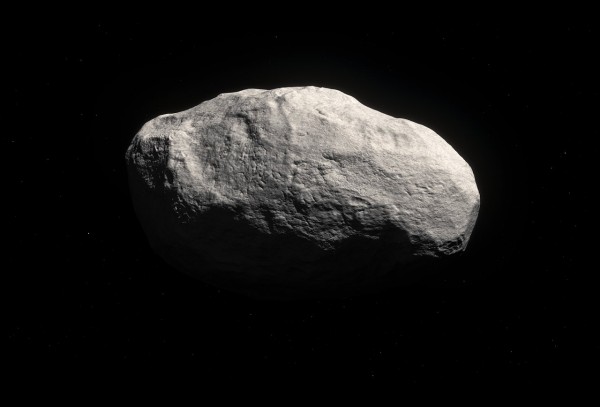
Astronomers announced on April 29, 2016 that – for the first time – they’ve identified a rocky object, apparently made of the same stuff as asteroids in the inner solar system, but likely preserved in the outlying Oort Cloud for billions of years. The object has been labeled C/2014 S3 (PANSTARRS), and astronomers observed it with the European Southern Observatory (ESO) Very Large Telescope, and the Canada France Hawai`i Telescope. It’s the first object to be discovered on a long-period cometary orbit that has the characteristics of a pristine inner solar system asteroid.
The astronomers say it might provide important clues about how our Earth and solar system formed.
Lead author of this study is Karen Meech of the University of Hawai`i’s Institute for Astronomy. She and her colleagues published their work in late April in the journal Science Advances. In their paper, they conclude that C/2014 S3 (PANSTARRS) formed in the inner solar system at the same time as Earth itself, but was ejected at a very early stage.
They say C/2014 S3 (PANSTARRS) is an ancient rocky body, rather than a contemporary asteroid that strayed out.
That’s exciting because the Oort Cloud is far from the sun, somewhere between about 50,000 and 200,000 times the Earth-sun distance. Meanwhile, the asteroid belt between Mars and Jupiter lies at about 2.2 to 3.2 Earth-sun distances. Assuming it did get ejected to the outer solar system early on, C/2014 S3 (PANSTARRS) didn’t undergo the same number of collisions, or the same amount of heating, as other known asteroids. The scientists called it “one of the potential building blocks of the rocky planets,” such as our own Earth, preserved in the deep freeze of the Oort Cloud for billions of years.
Karen Meech said:
We already knew of many asteroids, but they have all been baked by billions of years near the sun. This one is the first uncooked asteroid we could observe: it has been preserved in the best freezer there is.
That is, the deep freeze of deep space. The astronomers’ statement went on to say:
C/2014 S3 (PANSTARRS) was originally identified by the Pan-STARRS1 telescope as a weakly active comet a little over twice as far from the sun as the Earth. Its current long orbital period (around 860 years) suggests that its source is in the Oort Cloud, and it was nudged comparatively recently into an orbit that brings it closer to the sun.
The team immediately noticed that C/2014 S3 (PANSTARRS) was unusual, as it does not have the characteristic tail that most long-period comets have when they approach so close to the sun. As a result, it has been dubbed a Manx comet, after the tailless cat.
Within weeks of its discovery, the team obtained spectra of the very faint object with ESO’s Very Large Telescope in Chile. Careful study of the light reflected by C/2014 S3 (PANSTARRS) indicates that it is typical of asteroids known as S-type, which are usually found in the inner asteroid main belt.
It does not look like a typical comet, which are believed to form in the outer solar system and are icy, rather than rocky.
It appears that the material has undergone very little processing, indicating that it has been deep frozen for a very long time. The very weak comet-like activity associated with C/2014 S3 (PANSTARRS), which is consistent with the sublimation of water ice, is about a million times lower than active long-period comets at a similar distance from the sun.
The authors say this object opens up a new area of solar system studies, and that more pristine objects such as C/2014 S3 (PANSTARRS) would help them to distinguish between the current models detailing the origin of our solar system.
Read more about this object from ESO

Bottom line: Astronomers are calling it a Manx comet, for the tailless cat species. They first believed C/2014 S3 (PANSTARRS) was a long-period comet without a tail, but, on studying its light, found that it more closely resembles a rocky asteroid. Now they think this object is an asteroid, formed billions of years ago in the inner solar system and ejected early on to the deep freeze of space in our solar system’s Oort Cloud.











